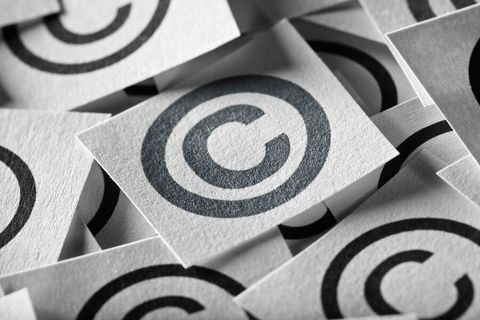Don’t (Es)stop Me Now: The Federal Circuit Clarifies Collateral Estoppel Analysis for Non-Challenged Patent Claims in IPRs
What You Need to Know
Key takeaway #1
A prior final written decision of the Board does not universally collaterally estop a patentee from asserting unadjudicated claims.
Key takeaway #2
Patentees’ complaint strategy may now include the potential for amending the complaint after an IPR proceeding to include previously unasserted and unadjudicated claims.
Key takeaway #3
IPR Petitioners should keep in mind that any unchallenged claims of a patent subject to an IPR can still be asserted against them in a future infringement action.
Client Alert | 4 min read | 02.18.25
The Federal Circuit recently issued a decision in Kroy IP Holdings, LLC v. Groupon, Inc., No. 23-1359 (Fed. Cir. Feb. 10, 2025), holding that collateral estoppel does not preclude a patentee from asserting any unadjudicated claims of a patent where other claims of the same patent were held unpatentable in an inter partes review (“IPR”) by the Patent Trial and Appeals board (“PTAB”).
Background
The patent at issue, U.S. Patent No. 6,061,660 (“the ’660 patent”), is owned by Kroy IP Holdings (“Kroy”). In October 2017, Kroy filed an initial suit against Groupon Inc. (“Groupon”) in the District of Delaware, alleging infringement of 13 claims of the ’660 patent. A year later, Groupon filed two inter partes review (“IPR”) petitions challenging 21 claims of the ’660 patent. In April 2020, the Board found all the challenged claims unpatentable. The decision of the Board was affirmed by the Federal Circuit under Rule 36.
In March 2022, Kroy filed an amended complaint alleging infringement of 14 claims of the ’660 patent, none of which were at issue in the IPR proceedings. Groupon filed a motion to dismiss under Federal Rule of Civil Procedure 12(b)(6), asserting that the Board’s prior IPR rulings on the challenged claims of the ’660 patent collaterally estopped Kroy from asserting the newly asserted claims. The district court granted the motion. Relying on principles outlined in XY, LLC v. Trans Ova Genetics, L.C., 890 F.3d 1282, 1294 (Fed. Cir. 2018) and Ohio Willow Wood Co. v. Alps S., LLC., 735 F.3d 1333, 1342 (Fed. Cir. 2013), the district court stated that if the Board issues a final judgment ruling that a patent claim is unpatentable, and “the differences between the unadjudicated claims and adjudicated claims do not materially alter the question of invalidity,” collateral estoppel precludes the patentee from asserting the unadjudicated claim in district court. Applying this principle, the district court determined collateral estoppel applied because it found no material difference between the unpatentable claims of the ’660 patent and the newly asserted claims of the ’660 patent. Kroy appealed the decision.
Federal Circuit Decision
On appeal, Kroy argued that collateral estoppel should not apply because an IPR proceeding requires a preponderance of the evidence standard for proving unpatentability, which is lower than the district court’s clear and convincing standard for invalidity. The Federal Circuit agreed.
The court, reviewing de novo under the law of the Third Circuit, stated that collateral estoppel applies when “(1) the identical issue was previously adjudicated; (2) the issue was actually litigated; (3) the previous determination was necessary to the decision; and (4) the party being precluded from relitigating the issue was fully represented in the prior action.” The court, however, stated that Supreme Court precedent establishes that collateral estoppel is subject to “well-known exceptions,” such as when a second action involves application of a different legal standard. See B & B Hardware, Inc. v. Hargis Indust., Inc., 575 U.S. 138, 148, 154 (2015); Grogan v. Garner, 498 U.S. 279, 284–85 (1991) (explaining that a prior judgment rendered under a preponderance of the evidence standard does not collaterally estop a subsequent matter litigated under a clear and convincing evidence standard.)
The court determined that this exception applied in Kroy. The court stated that the reasoning in its recent decision, ParkerVision, Inc. v. Qualcomm Inc., 116 F.4th 1345 (Fed. Cir. 2024), held true in this case. In ParkerVision, the court held that an expert was not collaterally estopped from providing testimony in a district court litigation supporting the validity of certain method claims that conflicted with the Board’s fact findings for the apparatus claims. The court explained that the burden to prove unpatentability in an IPR proceeding is preponderance of the evidence, which is lower than the clear and convincing evidence for invalidity in district court. The court held that this reasoning also applies to the present case, where Groupon’s burden of proof for the challenged claims in the IPRs was lower than its burden of proof for the newly asserted claims in the district court. Thus, the court stated that a contrary holding “would deprive patent owners of their property right without first requiring proof of patent invalidity that satisfies the statutorily prescribed clear and convincing evidence standard.”
The court also distinguished the present case from XY and Ohio Willow Wood. The court explained that XY stood for “the more limited proposition” that once the Federal Circuit affirms the Board’s decision that a patent claim is unpatentable, the same claim cannot be asserted in district court because “once the claim is ruled unpatentable, it no longer exists. whereas when a claim has ‘not been found unpatentable[,] . . . those claims remain presumptively valid.’” Further, while the court acknowledged that under Ohio Willow Wood, collateral estoppel may apply to patent claims that were not previous adjudicated and are not materially different from an invalidity perspective from claims that were previously adjudicated, the court stated that Ohio Willow Wood addresses whether a prior district court estopped a patentee from asserting claims in a district court that are immaterially different for purposes of invalidity. The court found that the district court’s reliance on Ohio Willow Wood ignored Supreme Court precedent and was, thus, legal error.
Impact
The court’s decision in Kroy affects patentees and petitioners alike. The court repeatedly emphasized collateral estoppel does not apply in a second legal action that involves a legal standard that differs from the legal standard in the previous action. As such, patentees and IPR petitioners should pay particular attention to how decisions at the district court and the PTAB may have an effect on potential patent infringement actions. For patentees filing first in district court, anticipating subsequent IPR proceedings may be standard, but now potentially amending the complaint after the IPR proceeding to include previously unasserted and unadjudicated claims could be part of the long-term calculus. For petitioners filing IPR petitions without corresponding district court litigation, understanding that the unchallenged claims may be the basis of a future infringement action could be informative.
Contacts
Insights
Client Alert | 2 min read | 04.17.25
Will the Supreme Court review the Ninth Circuit’s unique Server Test for online copyright infringement? After the Ninth Circuit recently affirmed the Server Test, a photographer and copyright owner has requested certiorari. Petitioner-Plaintiff, Elliot McGucken, is a landscape photographer. Respondent-Defendant, Valnet, Inc., is the owner of a travel website located at “www.thetravel.com.” McGucken sued Valnet for copyright infringement when Valnet embedded on its site a number of links to McGucken’s Instagram posts. The district court, bound by the Ninth Circuit’s en banc decision in Perfect 10, granted Defendant’s motion to dismiss, finding that the Server Test foreclosed McGucken’s direct infringement claim as a matter of law, because Valnet linked to the images and did not store them on its own servers. The Ninth Circuit affirmed in a panel decision. McGucken now requests the Supreme Court to review the validity of the Server Test, which is unique to the Ninth Circuit.
Client Alert | 5 min read | 04.15.25
Is Section 230 Going to Change? The FTC, DOJ and FCC Signal Significant Change for Online Businesses
Client Alert | 4 min read | 04.14.25
Client Alert | 4 min read | 04.10.25
Hikma and Amici Curiae Ask Supreme Court to Revisit Induced Infringement by Generic “Skinny Labels”



